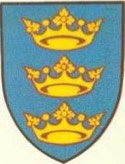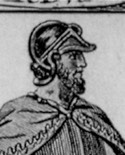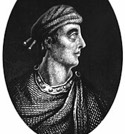Snyder Family 2016 - Person Sheet
Birth896, Kent, England
Death18 May 944
Death Memo25 Aug 958??
BurialShaftesbury
Alias/AKASaint Eadgifu; St. Aelfgith; St. Ælfgith
FatherSigehelm , Earl Of Kent (871-)
MotherMrs. Sigehelm of Kent (876-)
Spouses
Birthbet 870 and 875, Wessex, England
Death17 Jul 924, Farndon On Dee, Chester, England
FatherÆlfred (Alfred) "The Great" King of England (849-899)
MotherEalhswith of Mercia , Queen Of England (~852-905)
Birth921
Death26 May 946, Pucklechurch, Gloucestershire, England
Death Memoage 25
FatherEdward I "The Elder" King of England (~870-924)
MotherÆlflaeda (Edgiva) Queen of England (<905-968)
Marriageabt 940
ChildrenEdgar I "The Peaceable" (~934-975)
Edwy [Æwig], King Of England (ca942-959)
Notes for Ælfgifu , Queen Of England
Married ABT 905 to , Eadgifu (Edgiva)
Child 14: , Edgifu
Child 15: , Edburga (St.), nun at Nunnaminster
Child 16: , Edmund I the Elder, King of England, b. 921
Child 17: , Eadred, King of England, b. CIR 924
Child 18: , Gregory of Einsiedlen, Abbot of Einsiedlen
aka St. AElfgifu
aka edgiva, queen of england
aka eadgifu (edgiva)
aka elfiva
------------
St. Aelfgith the Younger
(Died AD 944)
St. Aelfgith was the first wife of King Edmund the Magnificent of England. The two were married in around AD 940 and Aelfgith soon became the mother of the future Kings Edwig All-Fair and St. Edgar the Peacemaker. Little is known of her life, but William of Malmesbury tells us how she redeemed condemned men, gave away precious garments to the poor and stoically endured prolonged physical suffering. She is also known to have taken a great interest in Shaftesbury Abbey, where her mother, Winflaeda had been a lay sister. King Edmund is known to have swapped land at Butticanley with some at Tisbury, so that his wife could leave it to the Abbey. What malady afflicted her is unknown, but she died before her husband, on 18th May AD 944 and was buried at Shaftesbury. Soon afterward, a number of invalids were healed at her graveside and she quickly became revered as a saint with a popular cult. She should not be confused with her husband's aunt, St. Aelfgith the Elder.
http://www.earlybritishkingdoms.com/adversaries/bios/aelfgithshaft2.html
Child 14: , Edgifu
Child 15: , Edburga (St.), nun at Nunnaminster
Child 16: , Edmund I the Elder, King of England, b. 921
Child 17: , Eadred, King of England, b. CIR 924
Child 18: , Gregory of Einsiedlen, Abbot of Einsiedlen
aka St. AElfgifu
aka edgiva, queen of england
aka eadgifu (edgiva)
aka elfiva
------------
St. Aelfgith the Younger
(Died AD 944)
St. Aelfgith was the first wife of King Edmund the Magnificent of England. The two were married in around AD 940 and Aelfgith soon became the mother of the future Kings Edwig All-Fair and St. Edgar the Peacemaker. Little is known of her life, but William of Malmesbury tells us how she redeemed condemned men, gave away precious garments to the poor and stoically endured prolonged physical suffering. She is also known to have taken a great interest in Shaftesbury Abbey, where her mother, Winflaeda had been a lay sister. King Edmund is known to have swapped land at Butticanley with some at Tisbury, so that his wife could leave it to the Abbey. What malady afflicted her is unknown, but she died before her husband, on 18th May AD 944 and was buried at Shaftesbury. Soon afterward, a number of invalids were healed at her graveside and she quickly became revered as a saint with a popular cult. She should not be confused with her husband's aunt, St. Aelfgith the Elder.
http://www.earlybritishkingdoms.com/adversaries/bios/aelfgithshaft2.html
Notes for Edward I "The Elder" (Spouse 1)
AKA: Eadweard The Elder, King Of The West Saxons
EDWARD I, the Elder (900-24 AD)
Son of Alfred the Great, Edward immediately succeeded his father to the throne. His main achievement was to use the military platform created by his father to bring back, under English control, the whole of the Danelaw, south of the Humber River.13
3Edward the Elder (Old English: Ēadweard se Ieldra) (c. 870 – 17 July 924) was King of England (899 – 924). He was the son of Alfred the Great (Ælfrēd se Grēata) and Alfred's wife, Ealhswith, and became King upon his father's death in 899.
He was king at a time when the Kingdom of Wessex was becoming transformed into the Kingdom of England. The title he normally used was "King of the Anglo-Saxons"; most authorities do regard him as a king of England, although the territory he ruled over was significantly smaller than the present borders of England.
Ætheling
Of the five children born to Alfred and Eahlswith who survived infancy, Edward was the second-born and the elder son. Edward's name was a new one among the West Saxon ruling family. His siblings were named for their father and other previous kings, but Edward was perhaps named for his maternal grandmother Eadburh, of Mercian origin and possibly a kinswoman of Mercian kings Coenwulf and Ceolwulf. Edward's birth cannot be certainly dated. His parents married in 868 and his eldest sibling Æthelflæd was born soon afterwards as she was herself married in 883. Edward was probably born rather later, in the 870s, and probably between 874 and 877. [1]
Asser's Life of King Alfred reports that Edward was educated at court together with his youngest sister Ælfthryth. His second sister, Æthelgifu, was intended for a life in religion from an early age, perhaps due to ill health, and was later abbess of Shaftesbury. The youngest sibling, Æthelweard, was educated at a court school where he learned Latin, which suggests that he too was intended for a religious life. Edward and Ælfthryth, however, while they learned Old English, received a courtly education, and Asser refers to their taking part in the "pursuits of this present life which are appropriate to the nobility".[2]
The first appearance of Edward, called filius regis, the king's son in the sources is in 892, in a charter granting land at North Newnton, near Pewsey in Wiltshire, to ealdorman Æthelhelm, where he is called filius regis, the king's son.[3] Although he was the reigning king's elder son, Edward was not certain to succeed his father. Until the 890s, the obvious heirs to the throne were Edward's cousins Æthelwold and Æthelhelm, sons of Æthelred, Alfred's older brother and predecessor as king. Æthelwold and Æthelhelm were around ten years older than Edward. Æthelhelm disappears from view in the 890s, seemingly dead, but a charter probably from that decade shows Æthelwold witnessing before Edward, and the order of witnesses is generally believed to relate to their status.[4] As well as his greater age and experience, Æthelwold may have had another advantage over Edward where the succession was concerned. While Alfred's wife Eahlswith is never described as queen and was never crowned, Æthelwold and Æthelhelm's mother Wulfthryth was called queen.[5]
EDWARD I, the Elder (900-24 AD)
Son of Alfred the Great, Edward immediately succeeded his father to the throne. His main achievement was to use the military platform created by his father to bring back, under English control, the whole of the Danelaw, south of the Humber River.13
3Edward the Elder (Old English: Ēadweard se Ieldra) (c. 870 – 17 July 924) was King of England (899 – 924). He was the son of Alfred the Great (Ælfrēd se Grēata) and Alfred's wife, Ealhswith, and became King upon his father's death in 899.
He was king at a time when the Kingdom of Wessex was becoming transformed into the Kingdom of England. The title he normally used was "King of the Anglo-Saxons"; most authorities do regard him as a king of England, although the territory he ruled over was significantly smaller than the present borders of England.
Ætheling
Of the five children born to Alfred and Eahlswith who survived infancy, Edward was the second-born and the elder son. Edward's name was a new one among the West Saxon ruling family. His siblings were named for their father and other previous kings, but Edward was perhaps named for his maternal grandmother Eadburh, of Mercian origin and possibly a kinswoman of Mercian kings Coenwulf and Ceolwulf. Edward's birth cannot be certainly dated. His parents married in 868 and his eldest sibling Æthelflæd was born soon afterwards as she was herself married in 883. Edward was probably born rather later, in the 870s, and probably between 874 and 877. [1]
Asser's Life of King Alfred reports that Edward was educated at court together with his youngest sister Ælfthryth. His second sister, Æthelgifu, was intended for a life in religion from an early age, perhaps due to ill health, and was later abbess of Shaftesbury. The youngest sibling, Æthelweard, was educated at a court school where he learned Latin, which suggests that he too was intended for a religious life. Edward and Ælfthryth, however, while they learned Old English, received a courtly education, and Asser refers to their taking part in the "pursuits of this present life which are appropriate to the nobility".[2]
The first appearance of Edward, called filius regis, the king's son in the sources is in 892, in a charter granting land at North Newnton, near Pewsey in Wiltshire, to ealdorman Æthelhelm, where he is called filius regis, the king's son.[3] Although he was the reigning king's elder son, Edward was not certain to succeed his father. Until the 890s, the obvious heirs to the throne were Edward's cousins Æthelwold and Æthelhelm, sons of Æthelred, Alfred's older brother and predecessor as king. Æthelwold and Æthelhelm were around ten years older than Edward. Æthelhelm disappears from view in the 890s, seemingly dead, but a charter probably from that decade shows Æthelwold witnessing before Edward, and the order of witnesses is generally believed to relate to their status.[4] As well as his greater age and experience, Æthelwold may have had another advantage over Edward where the succession was concerned. While Alfred's wife Eahlswith is never described as queen and was never crowned, Æthelwold and Æthelhelm's mother Wulfthryth was called queen.[5]
Notes for Edmund I "The Magnificent" (Spouse 2)
b. 0921[163]
d. 26 May 0946, Pucklechurch, Gloucestershire, England, Age: 25[163]
EDMUND I
13(940-46 AD)
Son of Edward the Elder, succeeded his half-brother, Æthelstan, with whom he had fought at Brunanburh. Combated the Norse Vikings in Northumbria and subdued them in Cumbria and Strathclyde. He entrusted these lands to an ally, Malcolm I of Scotland. Edmund met his death when he was killed at Pucklechurch, in Gloucestershire, by a robber.
b. 921
d. May 26, 946, Pucklechurch, Eng.byname EDMUND THE DEED-DOER, Latin EDMUNDUS MAGNIFICUS king of the English (939-946), who recaptured areas of northern England that had been occupied by the Vikings.
He was the son of the West Saxon king Edward the Elder (reigned 899-924) and the half brother of King Athelstan (reigned 924-939), under whom the political unification of England had been accomplished. On Athelstan's death (939), Olaf Guthfrithson, the Norse king of Dublin, occupied Northumbria and raided the Midlands.
Edmund recovered the Midlands after Olaf died in 942, and in 944 he regained Northumbria, driving out the Norse kings Olaf Sihtricson and Raegnald. He captured Strathclyde in 945 and entrusted it to Malcolm I, king of Scots, in return for a promise of military support. Thus, Edmund inaugurated a policy of establishing a secure frontier and peaceful relations with Scotland. In addition, his reign marks the beginning of the 10th-century monastic revival in England. The king was killed in his palace by an exiled robber and was succeeded by his brother, Eadred (reigned 946-955); Edmund's sons eventually acceded to power as kings Eadwig (reigned 957-959) and Edgar (reigned 959-975).
d. 26 May 0946, Pucklechurch, Gloucestershire, England, Age: 25[163]
EDMUND I
13(940-46 AD)
Son of Edward the Elder, succeeded his half-brother, Æthelstan, with whom he had fought at Brunanburh. Combated the Norse Vikings in Northumbria and subdued them in Cumbria and Strathclyde. He entrusted these lands to an ally, Malcolm I of Scotland. Edmund met his death when he was killed at Pucklechurch, in Gloucestershire, by a robber.
b. 921
d. May 26, 946, Pucklechurch, Eng.byname EDMUND THE DEED-DOER, Latin EDMUNDUS MAGNIFICUS king of the English (939-946), who recaptured areas of northern England that had been occupied by the Vikings.
He was the son of the West Saxon king Edward the Elder (reigned 899-924) and the half brother of King Athelstan (reigned 924-939), under whom the political unification of England had been accomplished. On Athelstan's death (939), Olaf Guthfrithson, the Norse king of Dublin, occupied Northumbria and raided the Midlands.
Edmund recovered the Midlands after Olaf died in 942, and in 944 he regained Northumbria, driving out the Norse kings Olaf Sihtricson and Raegnald. He captured Strathclyde in 945 and entrusted it to Malcolm I, king of Scots, in return for a promise of military support. Thus, Edmund inaugurated a policy of establishing a secure frontier and peaceful relations with Scotland. In addition, his reign marks the beginning of the 10th-century monastic revival in England. The king was killed in his palace by an exiled robber and was succeeded by his brother, Eadred (reigned 946-955); Edmund's sons eventually acceded to power as kings Eadwig (reigned 957-959) and Edgar (reigned 959-975).




